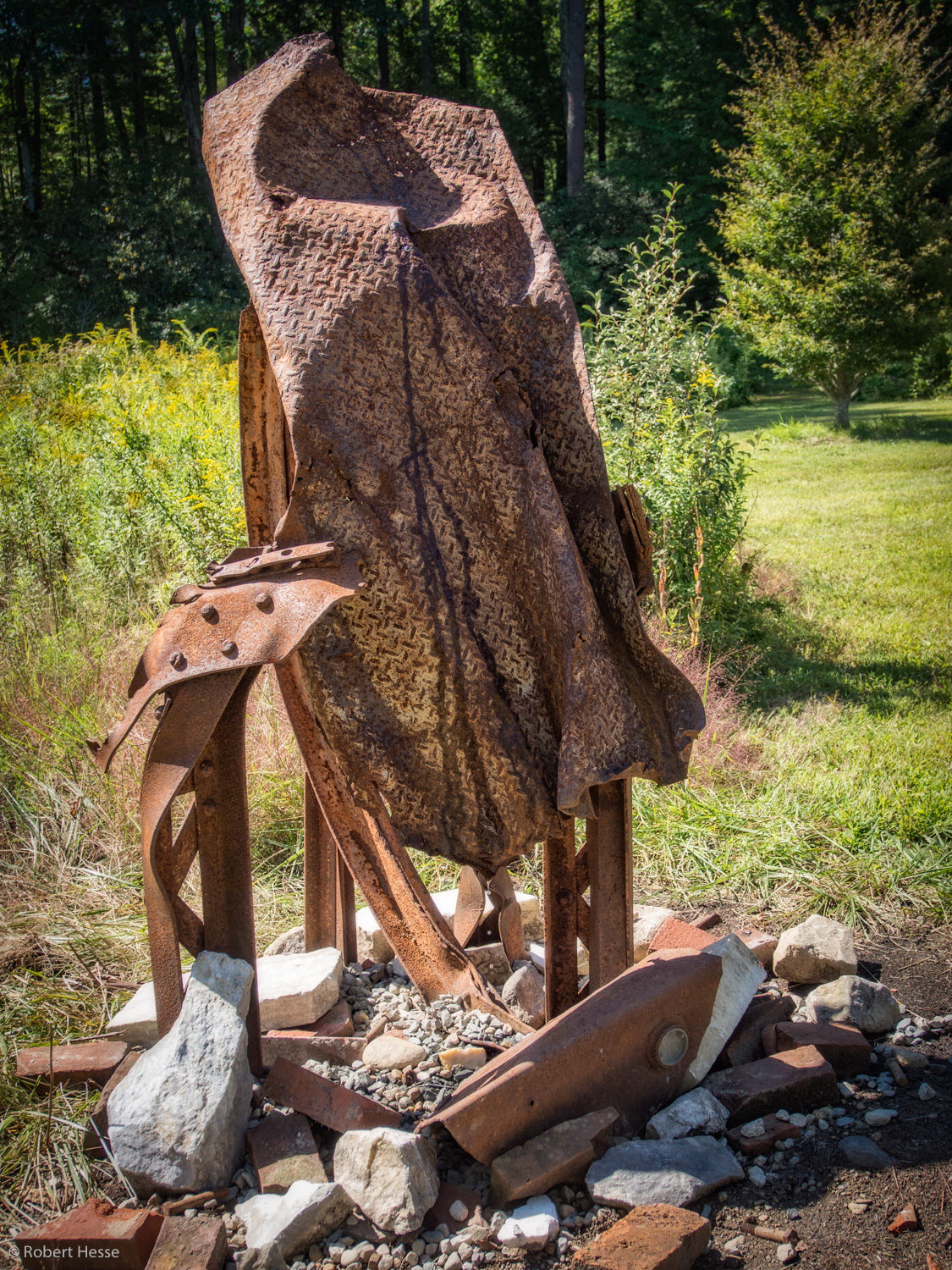I wonder how many bags of fertilizer are spread on a single field to grow corn. In the United States alone we grow corn on 90 million acres. How many 50-pound bags of synthetic fertilizers are emptied out and fed to the soil?
I’m obsessed with this thinking, it’s formed a loop in my mind, like a morning dream that repeats over and over. And while one detail changes, nothing significant enough shifts to allow an escape. The parking ticket can’t be found, the man is still in the bar drinking, how to get out of the parking lot and to safety.
After World War II ended, the companies who made nerve gas and poisons reprogrammed their products, calling them fertilizers. Then, they persuasively changed the way of farming all over the world, poisoning the earth instead of the enemy, while in the long term, harming both humans, insects, and soil. How did we arrive at this idea that we need to manufacture synthetic materials to help the earth grow plants? The microorganisms in the soil are all part of a complex soil web: the bacteria, the fungal populations, the earthworms, the nematodes, the mycelia are the real farmers.
Sketchbook page, Julia Tricca
In Beirut this week, thousands of tons of fertilizer exploded and took the lives of 150 people, injured thousands, destroying the homes of hundreds of thousands of others. A country that was already suffering from oppression, injustice, war and corruption is in chaos. Bags of fertilizer, or shall I say explosives, from Batumi, Georgia destined for Mozambique, one of the ten poorest countries on the planet, has shaken this country to its core.
Fertilizer bags are usually cheap paper just thick enough to hold the weight. But if they lay around and attract moisture, the paper decays, the bags leak, and moving them becomes a huge mess. Hazardous waste. Human trash needing to be gotten rid of. We’re good at manufacturing materials that harm the planet, that have a long shelf life, that don’t disappear even after hundreds of years.
We are caught in a loop of our own creation. How are we going to get out of our destructive cycle? Surely the farmers in Mozambique know how to grow food naturally. Buying expensive synthetic fertilizers is not going to solve their country’s many problems. It’s not solving the problems in our country. For example, in Kansas, where 90 percent of the state is agricultural land, one in five people go hungry. Kansas isn’t growing food, it grows feed for cattle, ethanol for fuel, and high fructose corn syrup, while a large percent of its population starves.
We have to envision a new model. We have to collectively re-envision the world we want to pass on to the unborn. We live on the planet, we need to eat food grown in its soil, and drink water from its underground rivers. Here is where we need to begin.
We need to believe that nature works and there is a natural way to live in accord with nature. The system is designed to work. We need to trust. And we need to make changes. Almost 70% of agricultural land on the earth is used to grow feed for animals we eat. And this meat provides a much smaller percent of calories to the world’s population than plant-based crops. If we are to provide food for the growing number of people on the planet, farming needs to be a journey in which we relate to the land and all its creatures.
Sketchbook page, Julia Tricca
The good news is that a United Nations report in 2014 stated that 80% of the world’s food is still produced by family farms. The future is not in industrial agriculture, but in intelligent small-scale farming. I heard a surprising statistic while listening to a podcast between John Kempf and Zach Bush, two modern agronomists—70% of our food comes from farms that are five acres or less. This statistic gives me hope. But for the people suffering in Lebanon, an outpouring of aid is what is needed. A few of the organizations you can donate to are:
The United Nation’s World Food Program
Unicef
Impact Lebanon
Project Hope
And remember to support your local farms!
Sketchbook page, Julia Tricca
Note: Artist Julia Tricca was a farmer at Old Frog Pond Farm during her high school and two college summers. She graduated this spring and shared her final art project with me. Julia will be installing a new sculpture at the farm this fall. We’re all proud of you, Julia!










